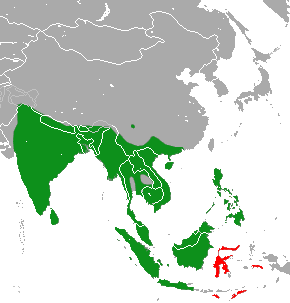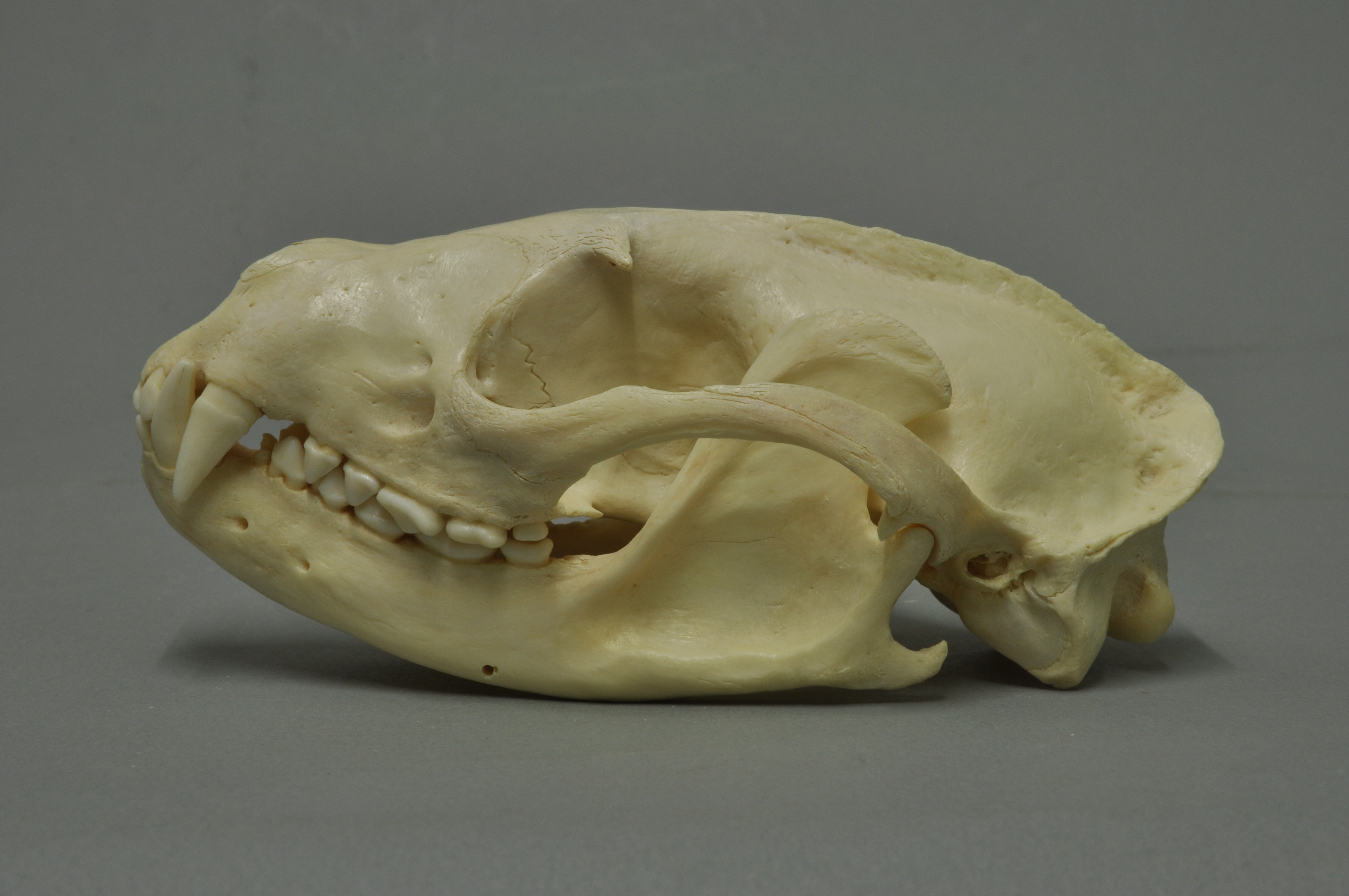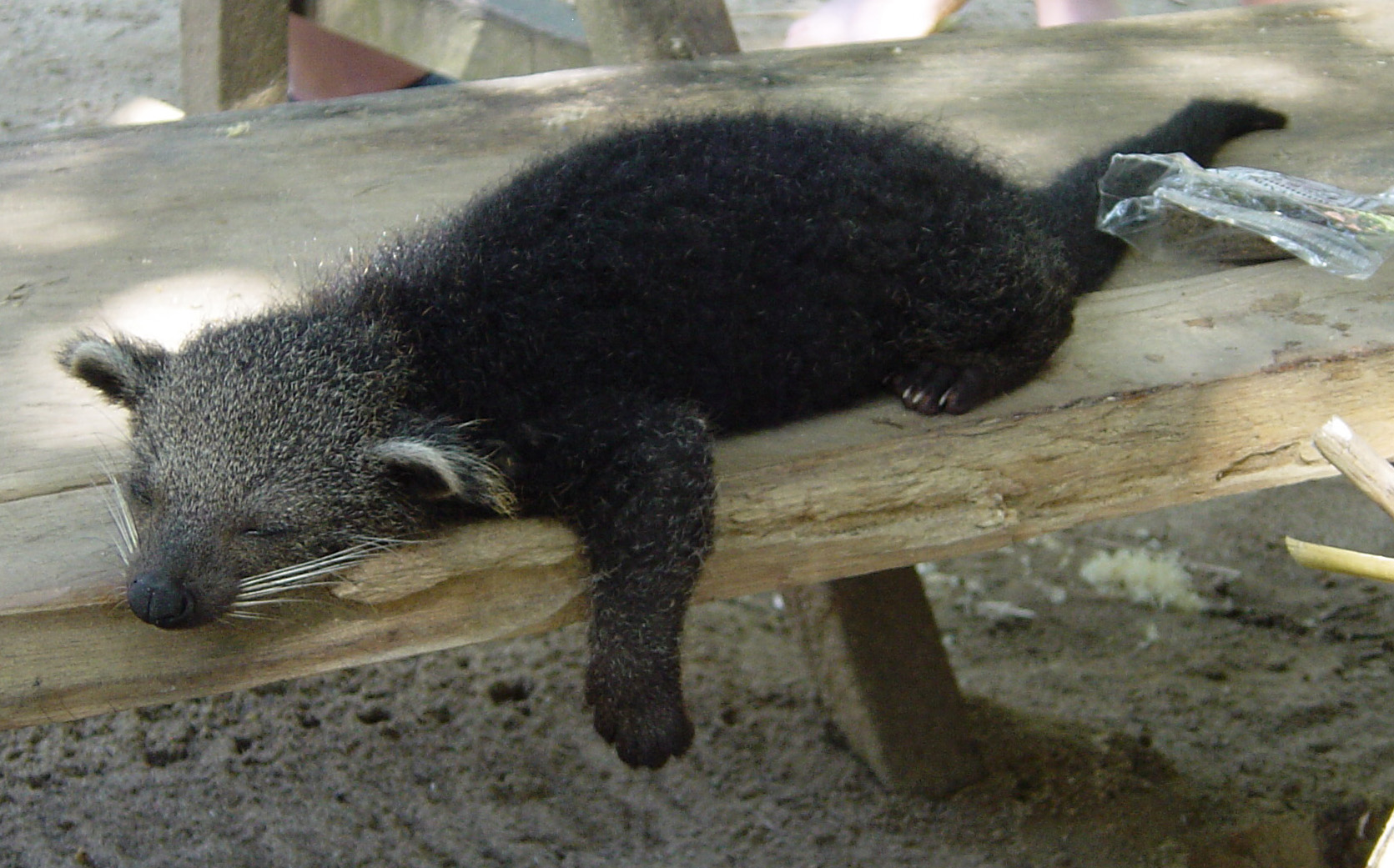|
Paradoxurinae
Paradoxurinae is a subfamily of the feliform viverrids that was denominated and first described by John Edward Gray in 1864. Pocock subordinated the genera ''Paradoxurus'', ''Paguma'' and ''Arctictis'' to this subfamily. Classification Living species Phylogenetic tree The phylogenetic relationships of Paradoxurinae are shown in the following cladogram: Extinct genera *'' Kichechia'' *'' Tugenictis'' *''Kanuites ''Kanuites'' is an extinct genus of Paradoxurinae, paradoxurine viverrid carnivore. It lived in Africa, during the Miocene epoch. Description ''Kanuites'' was about long, and looked remarkably similar to modern Genet (animal), genets. ''Kanuite ...'' *'' Siamictis'' References Viverrids Taxa named by John Edward Gray {{carnivora-stub ... [...More Info...] [...Related Items...] OR: [Wikipedia] [Google] [Baidu] |
Viverridae
Viverridae is a family of small to medium-sized, feliform mammals. The viverrids () comprise 33 species placed in 14 genera. This family was named and first described by John Edward Gray in 1821. Viverrids occur all over Africa, southern Europe, and South and Southeast Asia, across the Wallace Line. Their occurrence in Sulawesi and in some of the adjoining islands shows them to be ancient inhabitants of the Old World tropics. Characteristics Viverrids have four or five toes on each foot and half-retractile claws. They have six incisors in each jaw and molars with two tubercular grinders behind in the upper jaw, and one in the lower jaw. The tongue is rough with sharp prickles. A pouch or gland occurs beneath the anus, but there is no cecum. Viverrids are the most primitive of all the families of feliform Carnivora and clearly less specialized than the Felidae. In external characteristics, they are distinguished from the Felidae by the longer muzzle and tuft of facial vibrissae ... [...More Info...] [...Related Items...] OR: [Wikipedia] [Google] [Baidu] |
Paguma
The masked palm civet (''Paguma larvata''), also called the gem-faced civet, is a palm civet species native to the Indian subcontinent and Southeast Asia. It has been listed as least concern on the IUCN Red List since 2008 as it occurs in many protected areas, is tolerant to some degree of habitat modification, and widely distributed with presumed large populations that are unlikely to be declining. The genus ''Paguma'' was first named and described by John Edward Gray in 1831. All described forms are regarded as a single species. In 2003, masked palm civets at a wildlife market in China were found to have been infected with the severe acute respiratory syndrome coronavirus. Characteristics The masked palm civet's fur is grayish to ochraceous, black on the head, shoulders and neck, and blackish brown on the tail and feet. It has a white blaze on the forehead; white marks above and below the eyes extend to the ears, forming a half-collar. In morphology the masked palm civet ... [...More Info...] [...Related Items...] OR: [Wikipedia] [Google] [Baidu] |
Masked Palm Civet
The masked palm civet (''Paguma larvata''), also called the gem-faced civet, is a palm civet species native to the Indian subcontinent and Southeast Asia. It has been listed as least concern on the IUCN Red List since 2008 as it occurs in many protected areas, is tolerant to some degree of habitat modification, and widely distributed with presumed large populations that are unlikely to be declining. The genus ''Paguma'' was first named and described by John Edward Gray in 1831. All described forms are regarded as a single species. In 2003, masked palm civets at a wildlife market in China were found to have been infected with the severe acute respiratory syndrome coronavirus. Characteristics The masked palm civet's fur is grayish to ochraceous, black on the head, shoulders and neck, and blackish brown on the tail and feet. It has a white blaze on the forehead; white marks above and below the eyes extend to the ears, forming a half-collar. In morphology the masked palm cive ... [...More Info...] [...Related Items...] OR: [Wikipedia] [Google] [Baidu] |
Asian Palm Civet
The Asian palm civet (''Paradoxurus hermaphroditus''), also called common palm civet, toddy cat and musang, is a viverrid native to South and Southeast Asia. Since 2008, it is IUCN Red Listed as Least Concern as it accommodates to a broad range of habitats. It is widely distributed with large populations that in 2008 were thought unlikely to be declining. In Indonesia, it is threatened by poaching and illegal wildlife trade; buyers use it for the increasing production of kopi luwak. Characteristics The Asian palm civet's long, stocky body is covered with coarse, shaggy hair that is usually greyish in colour. It has a white mask across the forehead, a small white patch under each eye, a white spot on each side of the nostrils, and a narrow dark line between the eyes. The muzzle, ears, lower legs, and distal half of the tail are black, with three rows of black markings on the body. Its head-to-body length is about with a long unringed tail. It weighs . Its anal scent glands e ... [...More Info...] [...Related Items...] OR: [Wikipedia] [Google] [Baidu] |
Binturong
The binturong (''Arctictis binturong'') (, ), also known as the bearcat, is a viverrid native to South and Southeast Asia. It is uncommon in much of its range, and has been assessed as Vulnerable on the IUCN Red List because of a declining population trend that is estimated at more than 30% since the mid-1980s. The binturong is the only living species in the genus ''Arctictis''. Etymology The name ''Arctictis'' means 'bear-weasel', from Greek '' arkt-'' 'bear' + '' iktis'' 'weasel'. In Riau, Indonesia it is called 'benturong' and 'tenturun'. Its common name in Borneo is "binturong", which is related to the Western Malayo-Polynesian root "ma-tuRun". Taxonomy ''Viverra binturong'' was the scientific name proposed by Thomas Stamford Raffles in 1822 for a specimen from Malacca. The generic name ''Arctictis'' was proposed by Coenraad Jacob Temminck in 1824. ''Arctictis'' is a monotypic taxon; its morphology is similar to that of members of the genera ''Paradoxurus'' and ''Paguma'' ... [...More Info...] [...Related Items...] OR: [Wikipedia] [Google] [Baidu] |
William Thomas Blanford
William Thomas Blanford (7 October 183223 June 1905) was an English geologist and naturalist. He is best remembered as the editor of a major series on ''The Fauna of British India, Including Ceylon and Burma''. Biography Blanford was born in London to William Blanford and Elizabeth Simpson. His father owned a factory next to their house on Bouverie street, Whitefriars. He was educated in private schools in Brighton (until 1846) and Paris (1848). He joined his family business in carving and gilding and studied at the School of Design in Somerset House. Suffering from ill health, he spent two years in a business house at Civitavecchia owned by a friend of his father. His initial aim was to enter a mercantile career. On returning to England in 1851 he was induced to enter the newly established Royal School of Mines (now part of Imperial College London), which his younger brother Henry F. Blanford (1834–1893), afterwards head of the Indian Meteorological Department, had alrea ... [...More Info...] [...Related Items...] OR: [Wikipedia] [Google] [Baidu] |
Coenraad Jacob Temminck
Coenraad Jacob Temminck (; 31 March 1778 – 30 January 1858) was a Dutch people, Dutch Aristocracy (class), aristocrat, Zoology, zoologist and museum director. Biography Coenraad Jacob Temminck was born on 31 March 1778 in Amsterdam in the Dutch Republic. From his father, Jacob Temminck, who was treasurer of the Dutch East India Company with links to numerous travellers and collectors, he inherited a large collection of bird specimens. His father was a good friend of Francois Levaillant who also guided Coenraad. Temminck's ''Manuel d'ornithologie, ou Tableau systématique des oiseaux qui se trouvent en Europe'' (1815) was the standard work on European birds for many years. He was also the author of ''Histoire naturelle générale des Pigeons et des Gallinacées'' (1813–1817), ''Nouveau Recueil de Planches coloriées d'Oiseaux'' (1820–1839), and contributed to the mammalian sections of Philipp Franz von Siebold's ''Fauna japonica'' (1844–1850). Temminck was the first dire ... [...More Info...] [...Related Items...] OR: [Wikipedia] [Google] [Baidu] |
Binturong In Overloon
The binturong (''Arctictis binturong'') (, ), also known as the bearcat, is a viverrid native to South and Southeast Asia. It is uncommon in much of its range, and has been assessed as Vulnerable on the IUCN Red List because of a declining population trend that is estimated at more than 30% since the mid-1980s. The binturong is the only living species in the genus ''Arctictis''. Etymology The name ''Arctictis'' means 'bear-weasel', from Greek '' arkt-'' 'bear' + '' iktis'' 'weasel'. In Riau, Indonesia it is called 'benturong' and 'tenturun'. Its common name in Borneo is "binturong", which is related to the Western Malayo-Polynesian root "ma-tuRun". Taxonomy ''Viverra binturong'' was the scientific name proposed by Thomas Stamford Raffles in 1822 for a specimen from Malacca. The generic name ''Arctictis'' was proposed by Coenraad Jacob Temminck in 1824. ''Arctictis'' is a monotypic taxon; its morphology is similar to that of members of the genera ''Paradoxurus'' and ''Paguma'' ... [...More Info...] [...Related Items...] OR: [Wikipedia] [Google] [Baidu] |
Thomas Stamford Raffles
Sir Thomas Stamford Bingley Raffles (5 July 1781 – 5 July 1826) was a British statesman who served as the Lieutenant-Governor of the Dutch East Indies between 1811 and 1816, and Lieutenant-Governor of Bencoolen between 1818 and 1824. He is best known mainly for his founding of modern Singapore and the Straits Settlements also called Malaysia and Brunei. Raffles was heavily involved in the capture of the Indonesian island of Java from the Dutch during the Napoleonic Wars. The running of day-to-day operations on Singapore was mostly done by William Farquhar, but Raffles was the one who got all the credit. He also wrote ''The History of Java'' (1817). Early life Thomas Stamford Bingley Raffles was born on on board the ship ''Ann'', off the coast of Port Morant, Jamaica, to Captain Benjamin Raffles (1739, London – 23 November 1811, Deptford) and Anne Raffles (née Lyde) (1755 – 8 February 1824, London). Benjamin served as a ship master for various ships engaged in the ... [...More Info...] [...Related Items...] OR: [Wikipedia] [Google] [Baidu] |
Golden Palm Civet Range
Golden means made of, or relating to gold. Golden may also refer to: Places United Kingdom *Golden, in the parish of Probus, Cornwall *Golden Cap, Dorset *Golden Square, Soho, London *Golden Valley, a valley on the River Frome in Gloucestershire *Golden Valley, Herefordshire United States *Golden, Colorado, a town West of Denver, county seat of Jefferson County *Golden, Idaho, an unincorporated community *Golden, Illinois, a village *Golden Township, Michigan *Golden, Mississippi, a village *Golden City, Missouri, a city *Golden, Missouri, an unincorporated community *Golden, Nebraska, ghost town in Burt County * Golden Township, Holt County, Nebraska *Golden, New Mexico, a sparsely populated ghost town *Golden, Oregon, an abandoned mining town *Golden, Texas, an unincorporated community *Golden, Utah, a ghost town * Golden, Marshall County, West Virginia, an unincorporated community Elsewhere *Golden, County Tipperary, Ireland, a village on the River Suir *Golden Vale, Munster ... [...More Info...] [...Related Items...] OR: [Wikipedia] [Google] [Baidu] |








